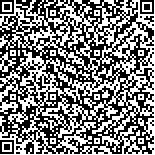| 张骐瑛,郑 莹,张军跃.离散选择实验和层次分析法在结直肠癌筛查方案决策中的应用[J].中国肿瘤,2020,29(3):177-184. |
| 离散选择实验和层次分析法在结直肠癌筛查方案决策中的应用 |
| Application of Discrete Choice Experiment and Analytic Hierarchy Process in Decision of Screening Programs for Colorectal Cancer |
| 中文关键词 修订日期:2019-06-06 |
| DOI:10.11735/j.issn.1004-0242.2020.03.A004 |
|
 |
| 中文关键词: 离散选择实验 层次分析法 结直肠癌 筛查方法 多准则决策分析 |
| 英文关键词:discrete choice experiment analytic hierarchy process colorectal cancer screening method multi-criteria decision analysis |
| 基金项目:北京市社会科学基金青年项目(18GLC063 ) |
|
| 摘要点击次数: 1876 |
| 全文下载次数: 558 |
| 中文摘要: |
| 摘 要:[目的]通过系统评价比较离散选择实验与层次分析法在结直肠癌筛查偏好中的应用情况。[方法]以中文关键词“离散选择实验” “层次分析法”“多准则决策分析”“结直肠癌”“筛查”等,英文关键词“discrete choice experience”“analytic hierarchy process”“multiple-criteria decision analysis”“colorectal cancer”“screening”等,系统检索中国知网、万方数据知识服务平台、PubMed和Google数据库中截至时间为2018年12月发表的结直肠癌筛查的多准则决策方法的相关文献,语种限定为中文和英文。纳入标准为方法研究和应用;以人为研究对象。排除标准为会议摘要、中文学位论文等非正式发表文献,以及综述、述评、新闻报道等非一手研究数据。[结果]共纳入32篇文献,涉及两种方法,包括结直肠癌筛查多准则决策分析6篇,离散选择实验有21篇,层次分析法有5篇,涉及美国、日本、荷兰、英国等几个国家,其中中国在离散选择实验的研究有5篇、层次分析法处于空缺,美国研究相对较多,共8篇,皆是使用Logistic模型。对两种方法进行分析比较,两种方法在分析结果上无明显差异,但在使用条件和操作上存在差异。[结论] 结直肠癌筛查的共同决策的方法目前处于发展阶段,皆有助于得出结直肠癌筛查对不同筛查技术的偏好,多准则决策在结直肠癌的筛查中应用比较少,目前两种方法国内应用不普及,有待发展,两种方法的应用有一定区别,可以根据需求灵活应用。 |
| 英文摘要: |
| Abstract:[Purpose] To survey the application of discrete selection experiment and analytic hierarchy process in colorectal cancer screening preference through systematic review. [Methods] Relevant literatures on multi-criteria decision-making methods for colorectal cancer screening were retrieved from China Knowledge Network,Wanfang Data Knowledge Service Platform,PubMed and Google Database from inception to December 2018 by key words“discrete choice experiment” “analytic hierarchy process”“multi-criteria decision analysis”“colorectal cancer” and “screening”. The literature language was limited to Chinese and English. Inclusion criteria were methodological research and application; and human subjects. Exclusion criteria were informal publications such as conference abstracts,Chinese dissertations,and non-primary research data such as reviews,comments,and news reports. [Results] A total of 32 articles were included for analysis. There 6 studies of multi-criteria decision-making analysis of colorectal cancer screening,21 studies of discrete selection experiments,and 5 studies of analytic hierarchy processes,involving the United States,Japan,Netherlands,United Kingdom and other countries. There were 5 studies using discrete choice experiment from China,but no article using analytic hierarchy process. There were 8 studies using analytic hierarchy process from the United States,which were all using Logistic models. By comparing the two methods,there was no significant difference in the analytical results,but there were differences in the conditions of use and operation.[Conclusion] The method of joint decision-making for colorectal cancer screening is currently in the development stage,which all contribute to the preference of colorectal cancer screening for different screening techniques. Multi-criteria decision-making is less in screening for colorectal cancer. At present,the domestic application of the two methods is not popular,and needs to be developed. The application of the two methods has certain differences,and can be flexibly applied according to requirements. |
|
在线阅读
查看全文 查看/发表评论 下载PDF阅读器 |